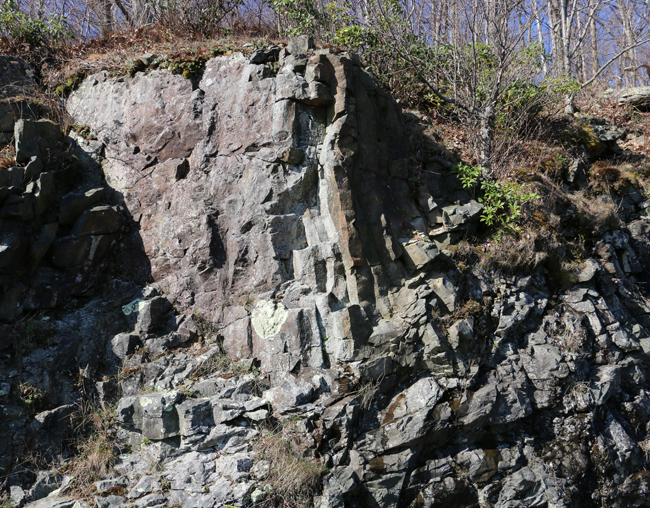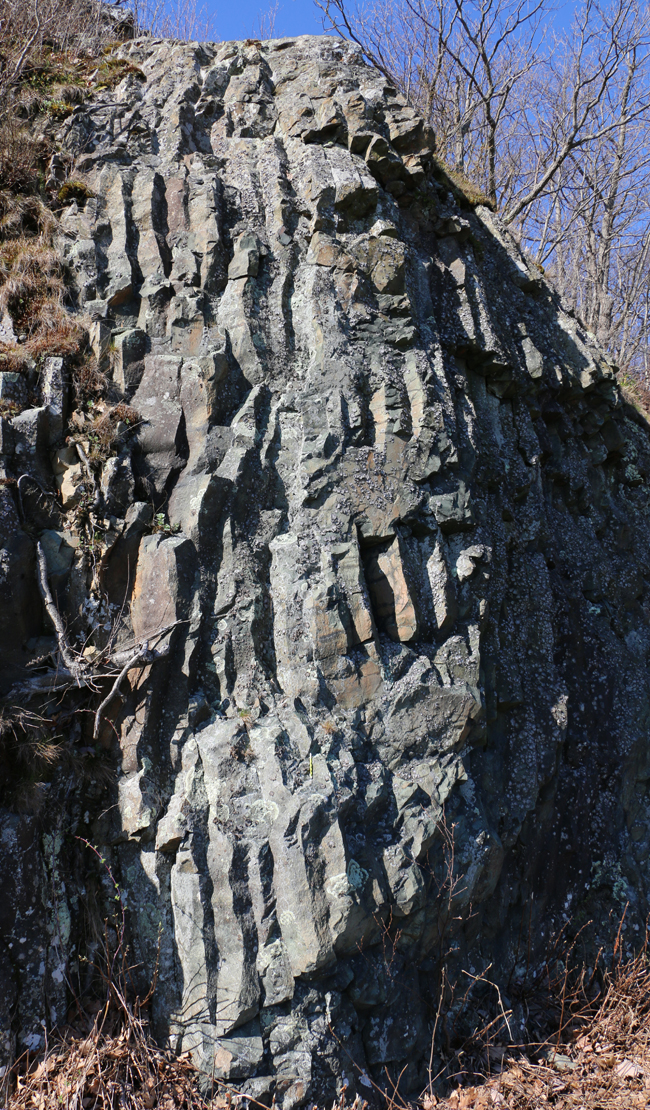20 April 2016
Cooling columns of the Catoctin Formation, Indian Run Overlook, Shenandoah National Park
Posted by Callan Bentley
It’s National Park Week, which means free entrance to our nation’s many wonderful national parks. My local park is Shenandoah National Park, astride the Blue Ridge one mountain range over from my house. Monday was parent/teacher conferences at my son’s school, which meant I had to look after him all day. We had a great time together up on Skyline Drive, searching for spiders, making GigaPans, and having a picnic. The weather was great. We saw a black bear and had a great time.
We stopped one place I had never been before: Indian Run Overlook, below the celebrated columns of Compton Peak, where there are some nice cooling columns exposed.

These are primary volcanic structures that formed when a basaltic lava flow oozed out onto the surface of Virginia during the Neoproterozoic breakup of the supercontinent Rodinia. This episode of tectonic rifting is preserved in lava flows like this, the feeder dikes which fed them, and associated pyroclastic deposits (tuffs and volcanic breccias). There are also some immature sedimentary deposits below and intercalated with the volcanic strata. When the lava flows cooled, they solidified. As they cooled further, the freshly-minted warm rocks contracted a bit, and cracked. The pattern of cracks was polygonal on the surface of the flow, but then the fractures propagated downward, dividing the monolithic flow into a set of more-or-less hexagonal ‘columns.’

Here is a GigaPan that my son and I made of the site. See if you can find the scale pencil:
I usually drive by this spot on field trips I lead in Shenandoah National Park, as it’s often obscured by shadows in the late afternoon – a shame, but that’s almost always how the timing works out. But on Monday I discovered that the lighting is really good in the late morning. From now on, I plan to stop every time I get the opportunity during those hours.


 Callan Bentley is Associate Professor of Geology at Piedmont Virginia Community College in Charlottesville, Virginia. He is a Fellow of the Geological Society of America. For his work on this blog, the National Association of Geoscience Teachers recognized him with the James Shea Award. He has also won the Outstanding Faculty Award from the State Council on Higher Education in Virginia, and the Biggs Award for Excellence in Geoscience Teaching from the Geoscience Education Division of the Geological Society of America. In previous years, Callan served as a contributing editor at EARTH magazine, President of the Geological Society of Washington and President the Geo2YC division of NAGT.
Callan Bentley is Associate Professor of Geology at Piedmont Virginia Community College in Charlottesville, Virginia. He is a Fellow of the Geological Society of America. For his work on this blog, the National Association of Geoscience Teachers recognized him with the James Shea Award. He has also won the Outstanding Faculty Award from the State Council on Higher Education in Virginia, and the Biggs Award for Excellence in Geoscience Teaching from the Geoscience Education Division of the Geological Society of America. In previous years, Callan served as a contributing editor at EARTH magazine, President of the Geological Society of Washington and President the Geo2YC division of NAGT.